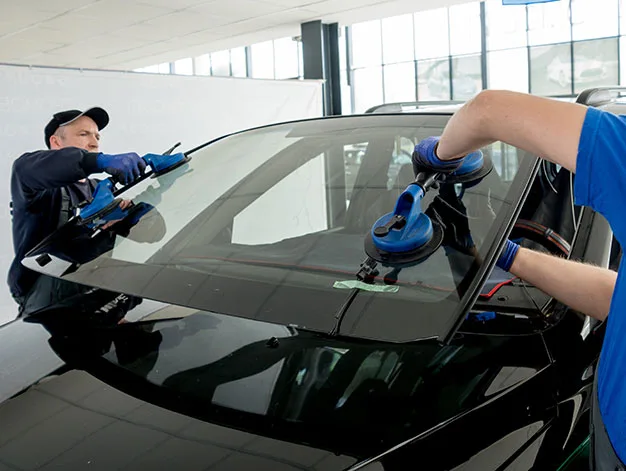How Polarized Windshields Reduce Glare: Enhancing Driver Safety and Comfort
See better, drive safer: How polarized windshields cut glare
- Special film blocks glare-causing light without making things too dark.
- Improves visibility in bright sun, rain, and fog.
- Reduces eye strain for a more comfortable driving experience.
- Works with car safety tech like cameras and HUDs

Understanding the Science Behind Polarized Windshields
Polarized windshields utilize a specialized film embedded within the glass layers. This film contains tiny crystals. They are aligned in a pattern to filter out horizontally polarized light. This light is the main cause of glare. Sunlight that strikes a surface, like a road or water, becomes polarized. This causes harsh reflections that can impair a driver's vision. Polarized windshields filter the light. They ensure only non-glare light reaches the driver's eyes.
The Benefits of Polarized Windshields
- Reduced Glare: The most immediate benefit is the significant reduction in glare, which can be particularly problematic around sunrise and sunset or when driving on wet roads. By minimizing glare, polarized windshields help prevent temporary blindness and eye strain.
- Enhanced Safety: Improved visibility leads to enhanced safety. Drivers are less likely to be momentarily blinded by glare, which means they can react more quickly to road conditions, obstacles, and other vehicles. This can be especially beneficial in preventing accidents caused by reduced visibility.
- Increased Comfort: Driving with reduced glare is safer and more comfortable. Eye strain and headache from prolonged exposure to glare are significantly reduced, making for a more pleasant driving experience, especially on long journeys.
- Better Visibility in Adverse Conditions: Polarized windshields improve visibility in sunny conditions and adverse weather conditions like rain or fog, where glare from oncoming vehicles can be particularly distracting.
While polarized windshields offer numerous benefits, there are a few considerations to keep in mind:
- Compatibility with Head-Up Displays (HUDs): Some vehicles equipped with HUDs may experience compatibility issues with polarized windshields, as the polarization can interfere with the visibility of the HUD projection.
- Cost: Vehicles equipped with polarized windshields may be more expensive than those without, and replacement costs for these windshields can also be higher.
Comparing Polarized Windshields with Traditional Glass
Traditional car glass protects well from the elements. But, it falls short of reducing glare. Polarized windshields offer a targeted solution to this problem. They enhance the driving experience a lot. Traditional glass may still be common. But, the shift to polarized technology shows its effectiveness and growing popularity.
Integration with Advanced Driving Assistance Systems (ADAS)
Modern vehicles often have ADAS. ADAS relies heavily on sensors and cameras. Polarized windshields work with these systems. They ensure the systems function well and without interference.
Maintenance and Durability
Concerns about the durability and maintenance of polarized windshields are often raised. However, these windshields are designed to withstand daily use. Their maintenance is not much different from traditional glass. Just clean them regularly with the right products. That's all you need to keep them in top condition.
The Future of Automotive Glass Technology
The development of polarized windshields represents a significant leap in automotive glass technology. As research continues, we will see even better solutions. They will cut glare. They will also save energy and look better.
Conclusion
Polarized windshields are more than a luxury. They are critical for safer, more comfortable driving. They make things easier to see and reduce eye strain. They also make roads safer by cutting glare. As this technology becomes more accessible, it is poised to become a standard feature in vehicles, marking a new era in automotive windshield safety and comfort.
